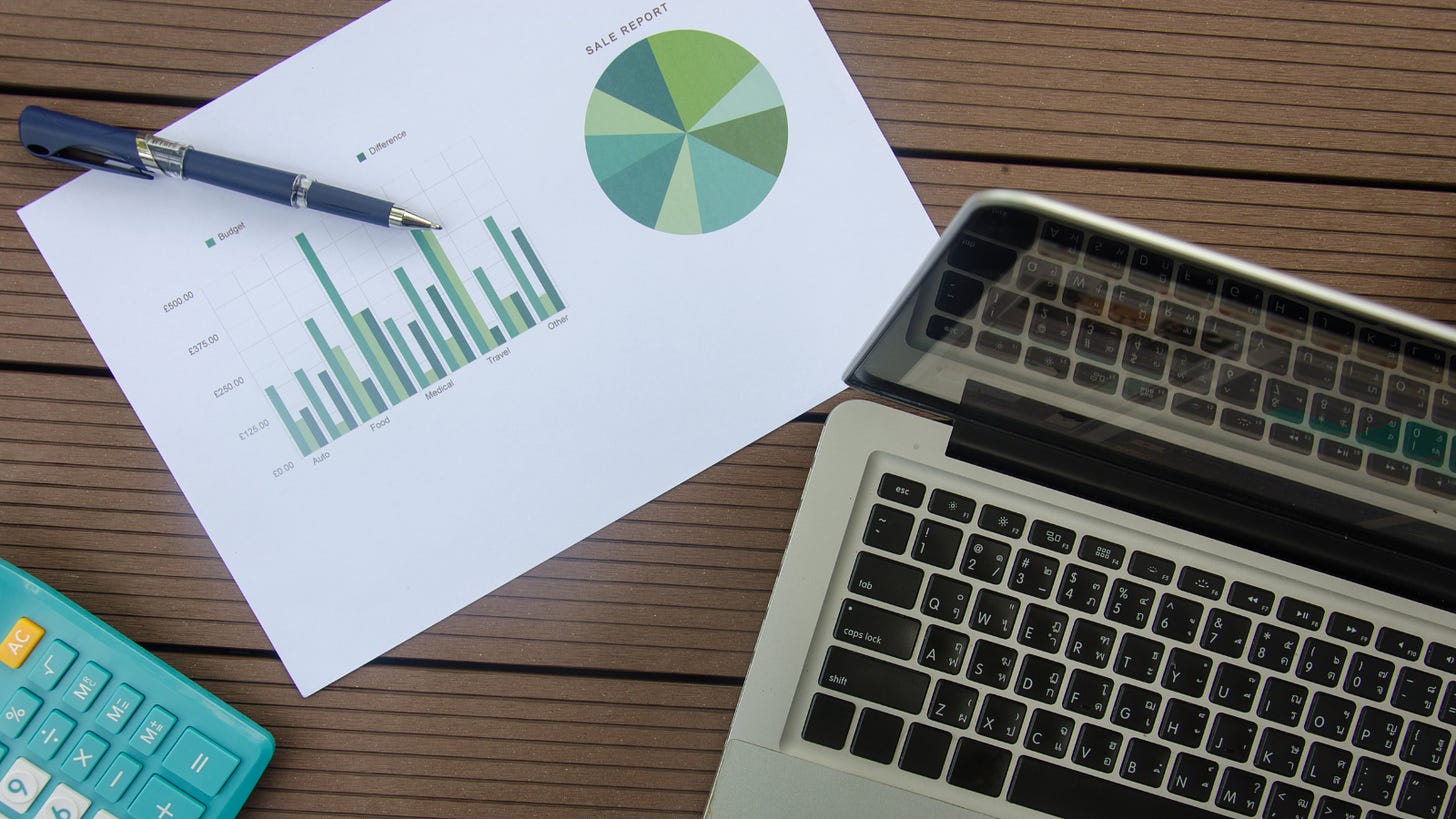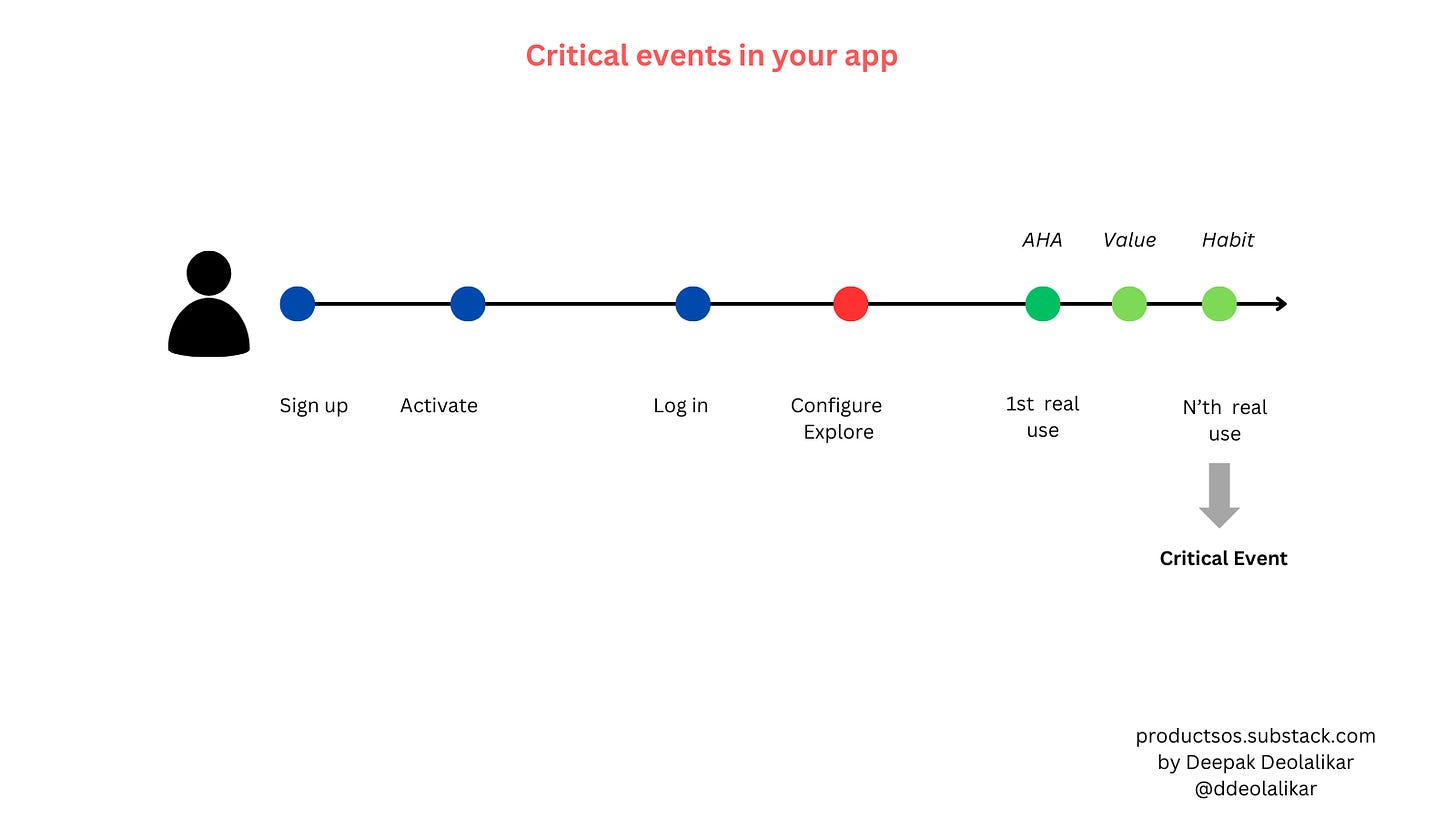Measuring the critical event in your application
Of all the events you track in your users journey, one of them is critical
Hey PMs
Today, I want to talk about measuring events and analytics in B2B. Specifically, how should we determine which events to track and which events are critical.
As a PM, you have been told ad nauseam to solve customers pain points and create value. But how do you know when they have reached that value? At what point do you say, YES, my user obtained value.
Let’s look at the events a user goes through in your product. There are many events in a user’s journey and one of them is critical. The critical event is what determines if the user will continue to use the software.
Let’s take an example of Uber.
You download the Uber app.
Then register your account.
Then you activate the account.
Then Log in and look around.
You would create metrics like :
Number of downloads
Number of new registrations
Number of activations
Number of Logins
Session time
None of these are critical events.
All the user has done is looked at the app.
How does Uber make money? When you hail a ride on the app.
That is considered a critical event.
This is what Uber optimizes for.
Until then, everything else is vanity metric.
Now, the number of downloads and activations are also important metrics. If downloads are down, you will need some sort of marketing campaign to increase people to download the app. If activations are down or if logins are down, then you will need to find if there is any friction that needs to be addressed. But even if you optimize for the earlier events, a user still has to book a ride or Uber does not make money.
Identifying your critical event is super important, so that you can nudge your users in the right way to use your app. In fact, the first time a user books a ride may very well just be a test. But if they book 3 rides within say a month, they may likely continue to use the app. The 3rd ride is a critical event in this case.
What are the events in B2B?
in B2B, things get a bit complicated because now you have multiple users in the enterprise who will go through the journey at different times. So it’s hard to determine when the customer overall has reached critical event, as opposed to individual users.
Here are some examples of critical events for various categories of B2B apps.
ERP - Creating accounting entries
CRM - Creating an opportunity record
Docusign - Sending a document for signature
Calendly - Creating an appointment
Figma - Saving a design or sharing a design file
Office - Saving a document
Cloud (AWS, GCS) - Using API in production environment
Canva - downloading an asset
At my previous company iCharts, we had built a self serve application for data visualization. This was way before the term PLG or Product Led Growth was coined. A user would sign up, activate, login, upload a CSV file and then make a visualization. Now creating a data visualization was not enough. You had to do something with it. You save it, then either download or share it on your web site using an embed code. Then the user would embed the object on their web site and then someone would view it. Like a YouTube video.
Now, copying the embed code was an important event but at this time I have no idea what they did with that embed code. Did they actually embed on a site? The only way to know was if someone viewed the data visualization on their site. So we instrumented the view event. We would then encourage our customers to embed the object they had already saved on their web site.
Later we determined that embedding one visualization was not enough. Sometimes that was just a test. But if they did it a second time, then we knew that they found value in continuing to use our application.
Types of Events
Typically, in B2B, there are three types of events that you should capture.
Time to AHA
Time to Value
Time to Habit
Time to AHA - This is the moment when a user realizes that they understand how the product works and how it could potentially benefit them. So far they have likely seen demos or attended sales calls. But now they are trying your product. They go through some initial set up and configuration and start using for the first use case.
This time can be quick for simpler products such as calendar scheduling. Once you integrate your calendar, then you send a link to your calendar to someone who then schedules a meeting. You get a confirmation. That’s your AHA moment. No back and forth. Now you may actually not have tried your first attempt on a real use case, instead you may have sent to a friend or to your personal email just to try it out and see how it works. It’s not really value but you got the AHA moment.
Im more complex software like CRM or ERP, it may take longer as the configuration takes a bit longer. Whatever your software, try to get the AHA moment even if this is a test version as soon as possible. The reason is as soon as user gets to the comfort zone, they can start to use it for real life scenario. Until then, they may not risk using your app.
In my case, when a user saves a visualization and gets the embed code is an AHA moment. They get how the app works. It’s still not full value because they still have to add the embed code to their web site. But at least they know the process if they had to repeat it.
Time to Value - This is when a user starts using your app for real life use case. In my example at iCharts, this would be when a visitor on their web site has viewed a visualization. Now our user has gone through a full cycle of a use case. The rubber has hit the road and they have started getting the value of the app.
Time to Habit - Now your user has gotten into a routine and is able to repeat the use case effortlessly. This is the point of no return. There is a high probability that a user will continue to use your product. For example, they have now created 3 calendar events or sent 3 messages in a week on an app. The assumption is that at the time of habit, the user will continue to retain.
Which one is a critical event?
It depends. Ideally, you want the Time to habit to be the critical event. That’s when users will retain and not churn. And all your product and growth activities will be optimized to time to habit.
In the early stages of your product, a critical event is when a users experience the first nugget of value. In later stages as you get more data, especially churn data, then you can determine at what point users stopped using the app.
As a first step, map the entire customer journey and identify all the events they go through. For each step, identify the metric e.g number of logins. You will still need to optimize these metrics along the users journey.
Determine which events are critical for your business and revenue e.g booking a ride in Uber. Once you know the critical event, then you optimize your entire customer communication around improving that metrics. Add content relevant to that metric, or create in app nudges.
Once you have more customers, analyze which customers stop using your product. At what point did they stop using. The step after that is likely your habit event. You might have to dig deeper to understand why customers are not reaching that critical event or point of habit. There can be several causes :
not the right right user
users did not connect the value
Some friction in the product e.g. set up not correct
Bottom line, optimize your products activities towards users reaching the critical event.
Have you figured out your products critical events?
I am available for coaching and advisory for B2B product teams and startups. Here are some things I can help.
Align business strategy to product strategy
Assess your product processes
Design product analytics for growth
1:1 and Team Coaching
Let’s start with a free 30 min intro call.
Subscribe for more of these.





